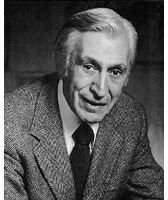Feingold Diet Food List: Learn What Foods to Avoid and What Ones Are Allowed
Benjamin Feingold
Dr. Benjamin Feingold (June 15, 1899 - March 23, 1982) was certified in Pediatrics and in Pediatric Allergy. He wrote and co-wrote numerous publications in the field of allergy and basic immunology. In the early 1970s, he reported a link between diet and allergic conditions. Although some, including other pediatricians, were skeptical, many children have benefited from his program. Below is a brief discussion on what conditions can benefit from this diet and how it works, along with a Feingold diet food list, including foods that are and are not allowed.
Feingold Diet
The diet is not only meant for children, it can also benefit adults as well. Basically, it is a test to rule out certain foods that can cause allergic reactions or sensitivities, which can lead to problems such as attention deficit hyperactivity disorder, obsessive compulsive disorder, Tourette syndrome, autism, depression, dyslexia, irritable bowel syndrome, asthma, eczema, ear infections, migraines, sleep disorders, bedwetting and aggression. The first stage is to eliminate certain foods for at least four to six weeks. The second stage, after improvement is noticed, involves gradually reintroducing foods. This will help the person to identify which foods can and cannot be tolerated.
Feingold Diet Food List
Foods to Avoid
Eliminate foods containing:
• Artificial colors - Check labels for words like “color added”, “U.S. certified color”, “food coloring” and “FD&C yellow No. 5”.
• Artificial flavors - Check labels for words like “artificial flavoring” and “flavoring”.
• Antioxidant preservatives - These include butylated hydroxyanisole (BHA), butylated hydroxytoluene (BHT) and tertiary butylhydroquinone (TBHQ).
• Aspartame (Nutrasweet) - This is a synthetic sweetener.
• Salicylates (a major ingredient in aspirin) - Foods containing salicylates that should be eliminated with this diet include all berries, almonds, apples, apricots, bell peppers, cherries, chili peppers, cucumbers (including pickles), currants, grapes, nectarines, oranges, peaches, plums, prunes, tangerines and tomatoes. Coffee and tea should also be avoided. This is not a complete list.
Other food additives - If eliminating the above foods does not show improvement, Dr. Feingold recommends avoiding corn syrup and foods containing monosodium glutamate (MSG), hydrolyzed vegetable protein, nitrites or nitrates, sulfiting agents and benzoates.
Other popular allergenic foods - If there is still no improvement, you may want to avoid milk and other dairy products, eggs, wheat, corn products, chocolate and soybeans/tofu.
Foods Allowed
Foods allowed on the diet include bananas, beans, beets, broccoli, Brussels sprouts, cabbage, cantaloupe, carrots, cauliflower, celery, dates, fresh meat and poultry, grapefruit, honeydews, kale, kiwis, lemons, lentils, lettuce, mangoes, mushrooms, oats, onions, papayas, pears, peas, pineapple, potatoes, rice, spinach, squash, sweet corn, sweet potatoes, watermelon and zucchini. This is not a complete list.
Note
You do want to be careful with this diet to prevent nutritional deficiencies.
Foods are not the only restrictions in this program. Over-the-counter medications and products like toothpaste containing chemicals should also be eliminated.
For more information on the Feingold diet, visit https://www.feingold.org/.
References
Feingold Association of the United States - https://www.feingold.org/
Organic Consumers Association - https://www.organicconsumers.org/school/news/adhd.cfm
